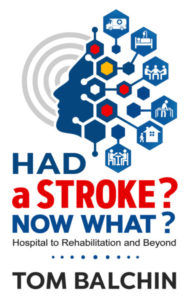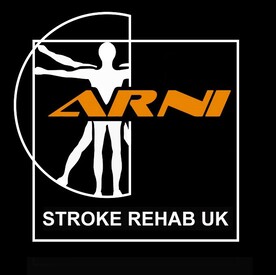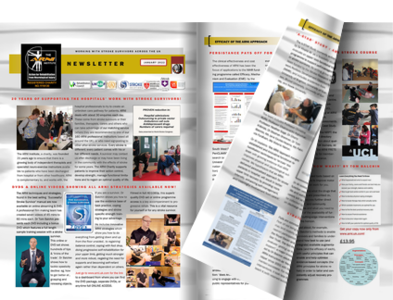What Is A Stroke
Get your copy of Had a Stroke? Now What? for a user-friendly synopsis, which reveals what to do and how to cope after stroke, from Hospital until many many years down the line.
Had a Stroke? Now What? for a user-friendly synopsis, which reveals what to do and how to cope after stroke, from Hospital until many many years down the line.
A stroke occurs when a blood vessel (artery) that supplies blood to the brain bursts or is blocked by a blood clot. Within minutes, the nerve cells in that area of the brain become damaged and die, and as a result, the part of the body controlled by the damaged section of the brain cannot function properly.
A stroke can be caused by:
- Blockage of a blood vessel that supplies blood to the brain. The blockage may be a blood clot that forms inside the blood vessel (thrombus) or an object (such as an air bubble or piece of tissue) that moves through the blood from another part of the body (embolus).
- Sudden bleeding from a blood vessel that supplies blood to the brain. This is most often caused by the rupture of a weakened area in a blood vessel (aneurysm).
- A sudden drop in blood pressure, which reduces blood flow to the brain. Low blood pressure can result from a heart attack, a large loss of blood, or a severe infection.
- High blood pressure, which can damage the delicate lining of blood vessels. Once damaged, fat and calcium can easily build up along the artery walls, forming a plaque. The blood vessel becomes narrowed and stiff (atherosclerosis), and blood flow is reduced.
Symptoms of a stroke tend to appear suddenly and may include:
- Numbness, weakness, or lack of movement (paralysis) in the face, an arm, or a leg, especially on only one side of the body.
- Trouble seeing in one or both eyes.
- Confusion and difficulty speaking.
- Dizziness and a loss of balance or coordination.
- Vomiting.
- A sudden, severe headache.
The effects of a stroke may be mild or severe and temporary or permanent, depending on which brain cells are damaged, how much of the brain is involved, and how quickly the blood supply is restored to the area. A stroke can affect speech, movement, behavior, and thought processes. When severe, it can cause paralysis, coma, and death. A person having symptoms of a stroke needs immediate medical attention.
What Happens
When you have an ischemic stroke the oxygen-rich blood supply to part of your brain is reduced. With a haemorrhagic stroke, there is bleeding in the brain.
After about 4 minutes without blood and oxygen, brain cells become damaged and may die.
The body tries to restore blood and oxygen to the cells by enlarging other blood vessels (arteries) near the area. If the blockage is in a large blood vessel, such as the carotid artery, the body may not be able to supply blood to the affected area through other blood vessels.
If blood supply is not restored, permanent brain damage usually occurs.
An ischemic stroke develops when a blood vessel (artery) supplying blood to an area of the brain becomes blocked by a blood clot. About 80% of all strokes are ischemic strokes.
A haemorrhagic stroke develops when an artery in the brain leaks or bursts (ruptures).
Haemorrhagic stroke
A haemorrhagic stroke develops when a blood vessel (artery) in the brain leaks or bursts (ruptures). This causes bleeding:
- Inside the brain tissue (intracerebral haemorrhage), which is often related to a head injury.
- Near the surface of the brain (subarachnoid haemorrhage or subdural haemorrhage), which most often occurs after a head injury. A subarachnoid haemorrhage also may be caused by an aneurysm.
Haemorrhagic strokes are not as common as strokes caused by a blood clot (ischemic strokes). However, haemorrhagic strokes cause death more often than ischemic strokes.
Treatment Overview
Prompt treatment of stroke and medical problems related to stroke, such as high blood sugar and pressure on the brain, may minimize brain damage and improve the chances of survival. Starting a rehabilitation program as soon as possible after a stroke increases your chances of recovering some of the abilities you lost.
Initial treatment for stroke
Initial treatment for a stroke varies depending on whether it’s caused by a blood clot (ischemic) or bleeding in the brain (haemorrhagic). Before starting treatment, your doctor will use a computed tomography (CT) scan of your head and possibly magnetic resonance imaging (MRI) to diagnose the type of stroke you’ve had. Further tests may be done to determine the location of the clot or bleeding and to assess the amount of brain damage. While treatment options are being determined, your blood pressure and breathing ability will be closely monitored, and you may receive oxygen.
Initial treatment focuses on restoring blood flow (ischemic stroke) or controlling bleeding (haemorrhagic stroke). As with a heart attack, permanent damage from a stroke often develops within the first few hours. The quicker you receive treatment, the less damage will occur.
What to Expect After a Stroke
After a stroke, paralysis on one side of the body is common, with pain, numbness, or tingling in your limbs. You may have difficulty walking, coordinating body movements, and swallowing and eating. You may have sensory problems that affect your sense of touch or ability to feel hot and cold.
Speech and language problems (aphasia) are also common after a stroke. Aphasia results from damage to left side of the brain, which is the area responsible for language. Some people who have aphasia may not be able to understand written or spoken language, read or write, or express their own thoughts.
Memory and learning may be affected. Fear, anxiety, anger, sadness, frustration, and grief are common emotional difficulties following a stroke.
The kind of disability you have and the degree of functioning that can be regained depend on:
- Which side of the brain was affected (whether it is your dominant side).
- Which part of the brain was damaged by the stroke.
- How much of the brain was damaged.
- Your general health before the stroke.
Concerns of the Caregiver
Taking care of a loved one who has had a stroke can be difficult for many reasons. You may be afraid he or she will have another stroke or will not be able to accept or overcome disabilities. You may worry that you are not prepared for the responsibility of caring for someone who’s just had a stroke, or you may have your own health concerns that make it difficult for you to care for another person. You may also become depressed over losing the lifestyle you previously enjoyed with your companion. And you may worry about the costs of rehabilitation and loss of income.
Before your loved one returns home, the rehab team will train you or other family members to give assistance and help with therapy. You may learn to help your loved one up from a fall, get dressed, get to the bathroom, eat, and do other activities. If you have your own health concerns that prevent you from being able to help, your loved one may need to go to a nursing home or assisted living facility, or you may need in-home help. But even if you can’t provide physical help, your love and support are still key to your loved one’s recovery.
Ways you can help with your loved one’s recovery include:
- Give support and encouragement for participation in the rehab program.
- Visit and talk with him or her often. Play cards together or watch TV. Try to keep in touch with your loved one’s friends as much as possible, and encourage them to visit.
- Participate in educational programs and attend rehabilitation sessions as much as possible.
- Help him or her practice and learn new skills.
- Find out what he or she can do independently or needs help with. Avoid doing things for your loved one that he or she is able to do without assistance.
Adapting After a Stroke
After a stroke, rehabilitation will not only focus on helping someone recover from disabilities but also on making changes in lifestyle, home, work, and relationships. Changes will depend on the type of disabilities, which are determined by the part of the brain affected by the stroke.
A stroke in the right side of the brain can cause difficulty with performing everyday tasks. This type of stroke affects the ability to judge distance, size, position, rate of movement, form, and the way parts relate to the whole (spatial-perceptual problems).
Perception problems may include:
- Not noticing people or things on the affected side and turning the head or eyes to the unaffected side.
- Someone with these types of problems may not be able to steer a wheelchair through a large doorway without bumping the door frame.
- Not being aware of body parts on the affected side.
- Difficulty forming numbers and letters, confusing similar numbers, or not being able to add numbers.
- Having trouble spelling words and reading.
- Confusing the inside and outside of clothing or the right and left sides of clothing.
- Having a hard time perceiving whether he or she is sitting or standing.
At this point, ARNI comes in to the picture to help you go further in your recovery from stroke… please continue straight on to the ARNI Programme.
For all general enquiries relating to Rehabilitation using one of the 150 ARNI Associate instructors or therapists around the UK, please contact Kate at ARNI Central right now on support@arni.uk.com

